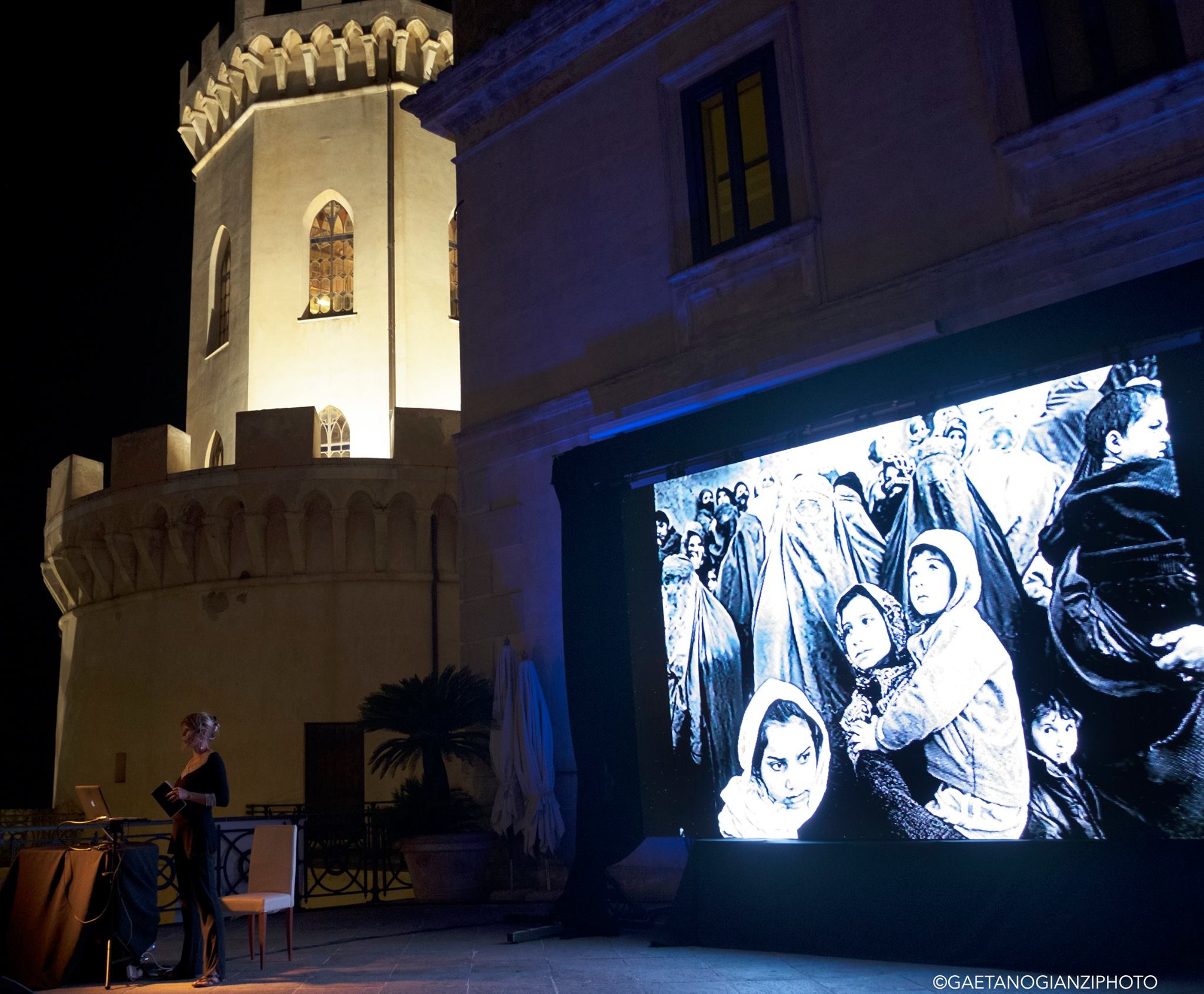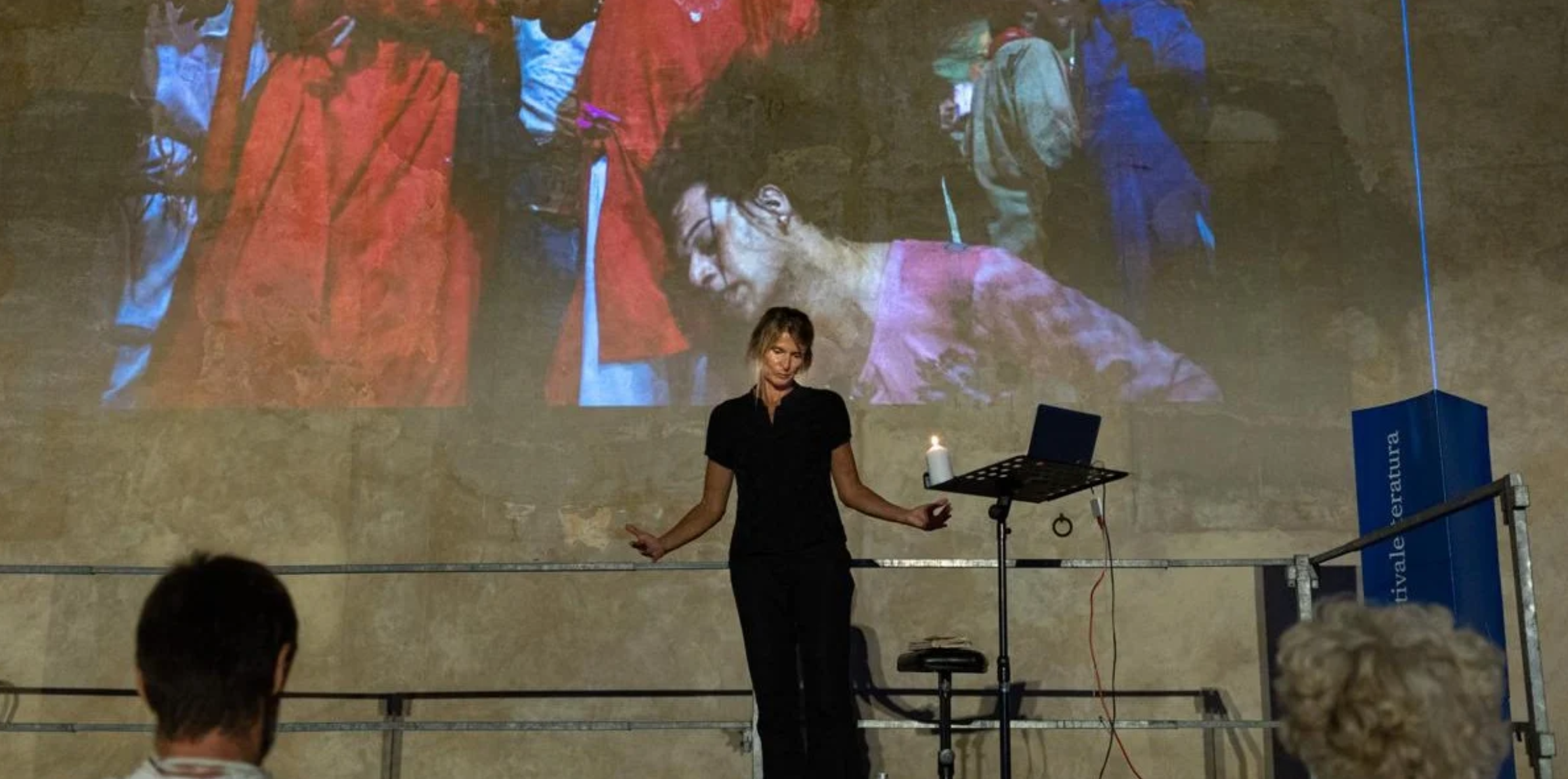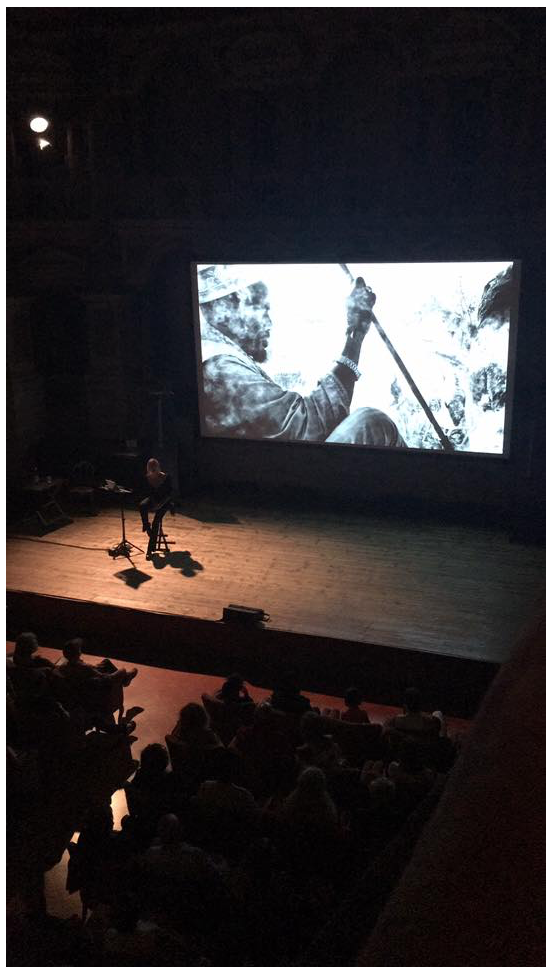a storytelling with images, movies, sounds
written by and with Monika Bulaj, 60′
A performing reportage on the move in Eastern Europe, Asia, Middle East, Africa, Central and South America, with nomads who can no longer wander, minorities forced to become nomads, pilgrims in shrines targeted by terrorists.
I work on an atlas of minorities at risk in the shared sacred places, which disorients and confuses mental maps based on dogmas and exclusions. These are clandestine geographies, stratifications of memories, copresences and correspondences. It s about places with uncertain identities, places-bridges, indecipherable to the barbarians, where formulas handed down by word of mouth have been preserved for centuries, and with them knowledge about origins, metaphors for initiations and transformations, recipes for survival. I look for the beauty in the dark places of the world. For the solidarity of the oppressed. The cohabitation among the religious where there are bombs. For the cracks in the theories of the so-called clash of civilisations, when presidents, bandits and terrorists use the name of gods to make war.
My work has changed over the years. I initially began by documenting religions, during wars and their aftermaths. But, at a certain point, my images began to look for me. Today I do something very simple, almost infantile: I collect the shards of a broken mirror, billions of shards, incoherent fragments, pieces, atoms, the brickbats of the Tower of Babel. Perhaps it’s the prerogative of the photographer to collect the tiles of a mosaic that will never be complete, and to order them in a way that seems correct, imagining, though never fully realising, a complete image of the world that may exist somewhere. Or that once existed and then was lost, like the language of Adam.

Bulaj’s show at Camploy Theatre in Verona is very powerful, putting the journeys of refugees and migrants in the spotlight. (…) Her images tell us how dangerous beauty is when it is at the service of truth. “That mud under your feet between wars and journeys” by Simone Azzoni. L’Arena.
“Sacred Crossroads is a truly unique undertaking. Somewhere on the borderline. At the crossroads, where in one direction there would be the theatre, in the other a performative storytelling or conference, in the third a photographic exhibition, in the fourth a concert, in the fifth an encounter with History and stories.
Bułaj’s photographic works are emotional micro-narratives. As beautiful as the works of the Dutch masters of the “Golden Age”. At the same time sensual and ethereal. Trying to capture the subtlest things, that it is man in contact with the sacred. At the same time, Bułaj does not comment so much on the photographs in progress, as she takes us into a journey through religions and exotic countries, through these “non-obvious places” and “places-bridges”, monasteries, villages and tribes. Her observations can be funny, sentimental, witty, original, and beautiful, as well as touching, intriguing, profound, and meaningful. All this hypnotizes and intoxicates. She puts you in a trance. In her photos Bulaj is most of the time close, surprisingly close to people, as if she were an emissary of that other dimension that looks at them, towards which their requests and hopes are directed. It is a real challenge, which she undertakes again and again despite the many dangers, damaged equipment, exotic diseases lurking everywhere, waiting for many hours, many days, in real spy games. Why does she do it? Because “photography is a privilege” – as she explained in the post-show conversation, which turned out to be no less fascinating than the show itself. Bulaj is an example of a fully responsible artist with a very personal sense of mission. She is an artist devoid of cheap pathos and the desire to shock, but she entrusts a huge role to ethical sensitivity and respect for established boundaries. When she says about her characters: “I would give my soul to understand what they are laughing at”, we feel a completely disarming and admirable charge of delicacy and sincerity, which is rarely found today.” “Wędrówki i rozdroża” (Wayfaring and crossroads), Henryk Mazurkiewicz, Wrocław, Poland
There are no words to describe Monika Bulaj’s work. It is testimony. Beauty crossed by pain. Life and humanity in a pure state. When she presents her work live, everything is silent and filled with the light of travel, of the story, of an antiquity still alive in the confines of a world that seems on the verge of disappearing. But it still exists. And it is precisely in the suburbs, she says, where “things happen”. Through writings, images, music and words that seem sung, rather than spoken, Monika Bulaj takes us through the sacred beyond the frontiers of cultures and religions. “Don’t ask me what religion I am”, a stranger who hosted her in Kabul told her, “but if I am a good person”.
And so begins this journey where what matters is not the camera, but the shoes because “it is a path behind the people fleeing from the madness of man”. A journey that starts from Afghanistan but reaches Tibet, where men see the body of divinity in nature, and then returns to that other border that is Trieste, where the photographer lives. It is a journey that starts from the geographical map, but that would like to “create a new atlas of geography, an atlas that breaks the mental maps that are at the basis of divisions”. Studying is fundamental, and this latest project, intimately linked to another collected in the book Where the Gods Whisper, hides three manuscripts, one Buddhist, one Sufi and one Nestorian, and lets itself be guided by the great poets, mystics and philosophers of all time. When images speak and words whisper, Festivalletteratura Mantova



